How to Make Sustainable Energy Mainstream


By Daphne Stanford
Why is there such a huge gap between sustainable energy and progress on a nationwide scale?
Let’s take a closer look at a few specific types of sustainable energy — solar, biofuel, and wind power — and the greater economic picture, to examine how these renewable power sources can flourish over the next decade.
Solar power
Many regions where it makes sense to harness solar power — for example, Florida and South Carolina — are controlled by lobbyists and conservative policy makers who favor traditional providers of natural gas, oil and electricity. Meanwhile, many of the best states for solar — Massachusetts, New Jersey, New York, Maryland and Connecticut — don’t necessarily get the most sun. However, perhaps this isn’t so much of a coincidence after all, since the solar industry doesn’t pose much of a threat to established utility companies in these states.
Of all the obstacles blocking rooftop solar panels’ ability to really take hold, the one perhaps most inhibiting is the sticker shock. Considering the average residential system costs about $12,500 after tax rebates, this price is enough of an impediment to many homeowners. As a result, most homeowners tend see a purchase like solar panels as a luxury. Luckily, solar panel system costs are projected to continue falling, as with much new technology on the market.
Biofuel & wind power
Interestingly, biofuel sourced from algae still stands to become one of the next major energy alternatives. However, biodiesel — still significantly cleaner than petroleum diesel, since it emits up to 76 percent fewer greenhouse gas emissions — remains the most usable and successful technological achievement, on the biofuel front. The most exciting part of this process is the adaption of difficult feedstock, such as grease from wastewater treatment plants, into renewable diesel. Waste-based biodiesel opportunities are the most promising, since the industrialized world has a surplus of waste that stands to be put to good use. If the oil industry is to face substantial challenges to its place as the primary provider of fuel for the automotive industry, it’s via the biofuel, hybrid, and electric vehicle industry.
Ironically, Renewable Energy World reports that Texas, a very red state, is the nation’s leading producer of wind power. Nebraska is another state in which wind power production is growing fast: “Fortunately, there are plenty of supporting facts — not alternative ones — that continue to show the growth, importance, and positive impact of clean energy in politically red regions and constituencies.”
The Atlantic Monthly recently noted that places like Eerie, Ind., are adapting to the changing economy by embracing the coding and tech industry.
The greater economic picture
Renewable energy stands to join the ranks of the tech industry, since it utilizes so much technology in its application, and the battle to disseminate accurate information, rather than “alternative facts,” continues—much of it online. Although the median household income in the U.S. rose slightly from 2015 to 2016, it still hasn’t reached pre-recession levels from 1999. Moreover, while the economy is steady, at the moment, sustainability-related occasions like Earth Day have been criticized as “a feel-good exercise for well-off liberals.” Instead, these days could be dedicated to helping underprivileged people with more immediate concerns like lead-tainted drinking water and food deserts.
In fact, the adoption of renewable energy can translate to economic benefits for not only the U.S. but other developing nations with lack of access to traditional power sources — such as in Asia and sub-Saharan Africa. Encouragingly, a full two-thirds of Americans support the prioritization of alternative energy development — rather than traditional fossil fuel development. Viewed in this light, renewable energy becomes the clear choice, moving forward toward an era where our dependence on fossil fuels wanes and clean energy leads the way toward independence, sustainability, and economic vitality. We must continue to speak out, however, to ensure that divestment from fossil fuels becomes the norm, rather than the exception. Doing so is necessary for the advancement of the human race — meaning all of us, rather than the elite privileged and few.
Daphne Stanford writes poetry & nonfiction, and she believes in the power of art, education, and community radio to change the world. Since 2012, she’s been the host of “The Poetry Show!” Sundays at 5 p.m. on Radio Boise. Follow her on Twitter @TPS_on_KRBX.
Image Credit: Pixabay
Board level volunteering is bringing CSR to life


Ethical Trading Initiative issues guides to child labour and modern slavery


Danish seminar to focus on ethical conduct in business


By Brian Collett — A mixing of Italian and Danish cultures as a means of reinforcing ethical conduct in business, education and training will be on the agenda at a seminar in Denmark this month.
The message from the organisers is that inter-cultural attitudes stimulate the innovation that supports ethical, social and economic progress.
The seminar, being held by the Italian Cultural Institute in Copenhagen on September 22, will focus on the creative potential of the individual and the community as the vital factor in bringing about the necessary changes.
Specialists attending the seminar will discuss how such business policies fostering creative talent can have the holistic effect of benefiting communities and the economy as a whole.
Contributions to the discussions will be made by institutions, employers and other interested organisations.
One of the speakers will be Pinuccia Panzeri, president of the Copenhagen branch of the Dante Alighieri Association, which encourages knowledge of the Italian language and culture.
She will outline the value of Italian culture and programmes to cultural, social and economic integration, with special mention of the Plida Project, which promotes Italian studies.
The ethics of human relationships in business will be a theme of a presentation by Guy Michel Franca, a member of the French Psychological Society and scientific director of the Five Foundation, an international ethics NGO.
The title of his presentation includes “creativity training as a factor of success in individual and corporate governance”.
Another speaker will be Teodoro Giustizieri, co-ordinator of the Rome-based HF Ethic Centres, which are dedicated to the integration of psychological support and training in business.
His subject is an “innovative approach to the development of human potential and the management of complexity”.
Ben & Jerry's: Why Brands Taking Stands is Smart Business
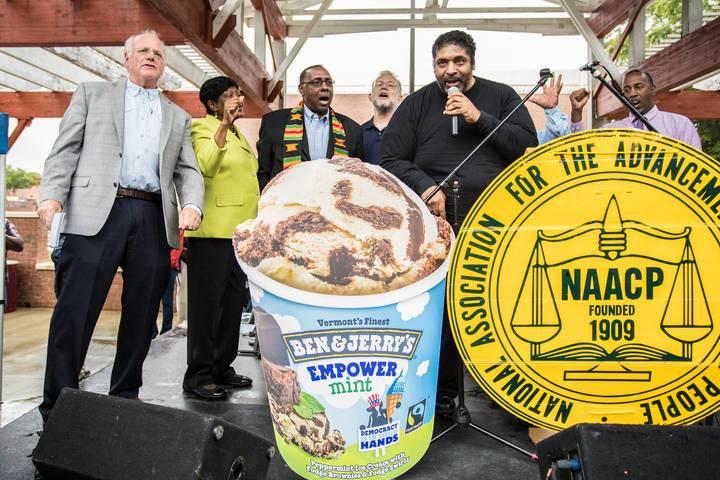

COMMIT!Forum will convene hundreds of corporate social responsibility leaders and CEOs from CR Magazine’s annual 100 Best Corporate Citizens ranking. The event includes a pre-conference workshop on integrated CSR and sustainability reporting from BrownFlynn. Join MGM’s Chief Diversity and CR Officer Phyllis James, Terracycle CEO Tom Szaky, Aman Singh, editor in chief of Futerra, and Icema Gibbs, head of CSR at JetBlue Airways. More information here.
Few brands are as famous for their social activism than Ben & Jerry's. The Vermont ice cream maker with global revenues of more than $1.2 billion (2015) is as much known for its social conscience as for its creamy, irresistible ice cream flavors. Pick a flavor and chances are you'll walk away with more than just a good feeling in your tummy: You'll feel you're making a statement.
The carefully-chosen names of flavors like Empower Mint and Fossil Fuel ice cream help to send a message to consumers about Ben & Jerry's values. A mint ice cream with a name that subtly reminds its fans about the importance of social justice and voting rights gets attention. And so does a rich concoction of fudge dinosaurs and chocolate ribbon when it becomes a conversation starter for why Alaska's arctic wilderness shouldn't be drilled.
And in each of these advocacy efforts, says Chris Miller, Ben & Jerry's activism manager, there's another, more visible message: that it is important to support nonprofits like the NAACP, which organized those voting registration drives and Greenpeace, which has lobbied to stop Arctic drilling. It's the nonprofits that are leading the advocacy efforts and according to Miller, provide the true impetus behind the social advocacy campaigns.
"We look to them for strategies," explained Miller.
Organizations like the Alaska Wilderness League, which was awarded a $70,000 grant by the Conservation Alliance in 2005 was the on-the-ground organizer and lobbyist (along with Greenpeace) to marshal support against drilling in Alaska's remote wilderness.
The NAACP, well versed in fighting for voter rights, organized a nationwide voter protection campaign while ensuring elderly and remote residents in contentious areas like North Carolina were able to register and to vote.
Ben & Jerry's role, said Miller, is to determine how "we leverage our toolbox to advance the strategies of the wider movement."
And while consumers are always at the forefront when it comes business decisions, it's important, says Miller, that its fans understand that its advocacy choices are based on values, not on the company's potential benefit.
"It’s not about us, it’s about supporting policies that address root causes," he said. "[Across] all aspects of our business, we put our fans first, except for our advocacy work. The campaigns we run are not about rooted in what we believe our fans care about. Instead, we start inside, with what are our values and what is the change we seek to make in the world. And then we design campaigns that are engage and educate our fans and ultimately inspire them to take action."
To consumers, knowing that these are hand-picked issues that Ben & Jerry's founders truly care about speaks to the heart of why they support many of its causes.
"I think rooting this kind of work in the founder's values is an important part of what makes our work authentic and credible. These aren’t made up things we care about, they come from our founders passion for social justice."
Miller admitted that even though Ben & Jerry's works hard to separate how it runs its business decisions and its advocacy efforts, there is an interrelationship between the two: Its consumers trust its advocacy choices because they trust the company as a business, and vice-versa. And yes, that's ultimately good for business.
"[The] strongest connection we can have with consumers is a shared set of values," said Miller, which is why being "authentic and credible" is key to a successful business.
And it also means accepting that not everyone is going to agree with your views.
"Some people are going to disagree ... but the flip side is you do create a consumer base," supporting Ben & Jerry's credo that "It is better to be loved by some than to be inoffensive to everyone."
Even though the company's support in 2016 of Black Lives Matter was controversial, the messaging that the company sent out appealing to its fan base to "join us in not being complicit" received huge support. Celebrities like Mark Ruffalo, Katy Perry and Jack Dorsey jumped behind the effort, bringing even more visibility to a blog post it had published.
"We don't need everyone to love us," said Miller, and that admission may be part of why its fans trust in its authenticity as a brand and an advocate.
As to determining whether the effort invested has been worth it, Miller said, "We judge the success of the campaign by whether we win or lose them." The company manufactures most new flavors in small batches and may retire them after the campaign is over. That keeps consumers' interest fresh.
"I think the trick to what we do is .. to make them engaging and relevant to our fan base."
Miller says its a business approach that can have tremendous consumer appeal, irrespective of what your market is. "More companies should be finding ways to leverage their connection with consumers. Consumers and fans will reward them for it and the world will be a better place," Miller said
Images: Courtesy of Ben & Jerry's
As DACA Blows Up, Business Leaders Urge Ivanka Trump To Act
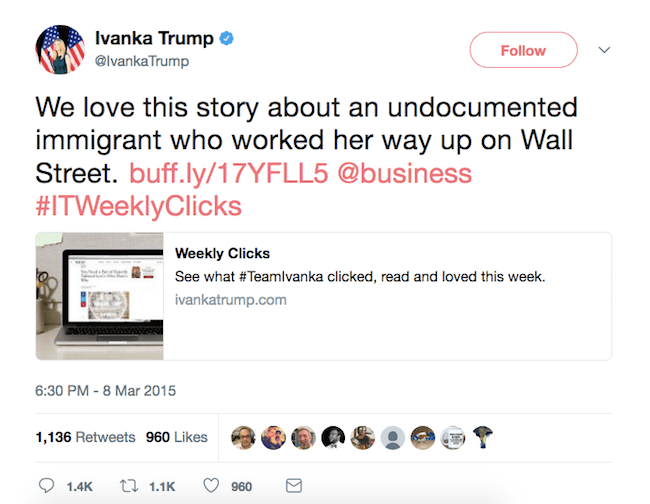

President Trump has more than the usual amount of turmoil on his hands this week, and 40 major business leaders are about to add fuel to the fire. They are set to deliver a letter urging Secretary of State Rex Tillerson to fill the vacant position of Ambassador-at-Large for global women's issues. In an interesting twist, they have copied one of the President's top advisors -- his daughter Ivanka -- on the letter.
Over the Labor Day weekend when Trump floated word that he would deport 800,000 young immigrants who have been shielded by DACA, the Deferred Action for Childhood Arrivals policy established in 2012. The blowback over DACA will most likely drown out publicity for the letter. That's unfortunate because the letter seems less aimed at influencing Tillerson and more aimed more at prodding Ivanka Trump to act.
They write letters
The McClatchy news organization broke word of the ambassador-at-large letter last Saturday in the Kansas City Star. McClatchy reporter Katie Glueck was provided with a preview of the letter, which was unsent as September 1. It was organized last week ahead of a release date some time this week.
According to Glueck, the letter is signed by a laundry list of major business leaders including Aetna Inc. and Johnson & Johnson among others.
Interestingly, some of the signatories represent companies that do not lead the U.S. in terms of sheer size, but they do have high brand recognition, an association with upscale living and a strong identification with Trump's home town and seat of business, New York City. Those include Macy’s Inc. and Godiva Chocolatier.
The purported goal of the letter is to ensure that the Secretary of State hears a strong message about U.S. priorities and women's empowerment from the U.S. business community.
Here's a snippet cited by Glueck (do read the full article for details):
We strongly urge you to quickly select qualified and experienced candidates for key leadership positions that focus on empowering women and girls globally...The swift nomination (and confirmation) of the Ambassador-at- Large for Global Women’s Issues at the U.S. Department of State and the ongoing support for the USAID leadership focused on the empowerment of women and girls will help harness untapped potential as the U.S. seeks to achieve its foreign policy goals.
U.S. businesses and women's issues
The Ambassador-at-large position is of particular interest to U.S. businesses that are striving to bring their overseas operations under the corporate social responsibility umbrella.
The need for global progress on women's issues is especially urgent in the fashion industry, where women dominate the overseas factory force.
On the surface, it makes sense to cc Ivanka Trump on the letter. She fills triple duty as a family member, presidential advisor and businesswoman with significant overseas operations in the fashion industry.
However, in the context of Ivanka Trump's track record this year, the cc seems more aimed at underscoring her failures than urging her to take the initiative.
So far Ivanka Trump doesn't seem to have had much influence on her father over women's issues, and her brand has been experiencing blowback resulting from her father's policies during the 2016 presidential campaign and while in office.
Last week the Washington Post highlighted the disconnect between Ivanka Trump's self-described life's mission of "improving the lives of working women" and the reality of conditions for her workers in overseas factories.
In another recent development that resulted in a storm of criticism, last week Ivanka Trump issued a statement in support of her father's decision to lift a requirement for businesses to provide a breakdown of employee salaries according to age, race and gender:
“Ultimately, while I believe the intention was good and agree that pay transparency is important, the proposed policy would not yield the intended results...We look forward to continuing to work with EEOC, OMB, Congress and all relevant stakeholders on robust policies aimed at eliminating the gender wage gap.”
AOL.com was among the many to twist the knife, observing that there was "no further explanation as to why the rule would not work" and that Ivanka Trump had "promised to fight for equal pay."
Yet another point of embarrassment is Ivanka Trump's position on DACA.
Internet sleuths have unearthed an article that Ivanka Trump shared on social media in 2015, months ahead of her father's entry into the Republican presidential primary, which described how an undocumented woman from Mexico worked her way up from selling funnel cakes in Texas to a Wall Street career.
If Trump found that story inspirational and worthy of sharing, that sentiment has not provided her with the leverage to influence her father on DACA.
Some good news for the Ambassador-at-Large for global women's issues -- or not
The cc to Ivanka Trump is also interesting because Rex Tillerson has already stated that the position of Ambassador-at-Large for global women's issues is safe.
That's good news, considering that the position is a relatively new one. The State Department's Office of Global Women's Issues was established by former President Clinton in 1995. The ambassador-at-large position was not created until 2009, by former President Obama through Secretary of State Hillary Clinton.
In a recent letter to Bob Corker, Chairman of the Senate Committee on Foreign Relations, Tillerson stated that he would retain the position ambassador-at-large for global women's issues, though he would eliminate, reduce or combine about 70 other positions.
The bad news is that under Tillerson's reorganization, the ambassador-at-large will report to the Under Secretary for Civilian Security, Democracy, and Human Rights, which is among the hundreds of positions that Trump has yet to fill.
The letter to Tillerson notwithstanding, there are no indications that the Ambassador-at-Large position will be filled any time soon either.
A call to action for Ivanka Trump
The letter to Tillerson was organized by the women's leadership development not-for-profit Vital Voices Global Partnership, in partnership with CARE and Save the Children USA.
Vital Voices has an embedded interest in the Ambassador-at-Large position. Its co-founder and former chair and co-CEO is Melanne Verveer, who was the first woman tapped for the position by President Obama
A 2009 press release announcing her appointment emphasized the "elevated importance of global women’s issues to the President and his entire Administration.”
Vital Voices also has a broader interest in preserving the State Department's Office on Women's Issues. That connection was highlighted earlier this year on International Women's Day, when the not-for-profit tasked former Secretary of State Hillary Clinton with delivering the keynote address at its annual Global Leadership Awards event -- founded by Clinton when she was First Lady.
As cited by ABC News, Clinton's speech was a call to action:
"Our voices have always been vital but they have never been more vital than they are right now. Not just in far away countries but right here," Clinton said at the annual event held at the Kennedy Center."And we are just getting started," she added to applause.
Clinton also praised the women who participated in International Women's Day, which she said feels particularly "significant" this year.
"International Women’s Day is always important but this year it feels even more significant," she said. "A day to recognize that women have always been on the front lines of the most important fights unfolding around us."
By cc-ing Ivanka Trump on the Tillerson letter, Vital Voices and its private sector partners may hope to spur Ivanka Trump to action.
If her record as an advisor so far is any indication, though, a tweet or two will probably be the only result.
Image (screenshot): via Twitter.
Arkema Chemical Plant Explosion Shows Downsides to EPA Cuts
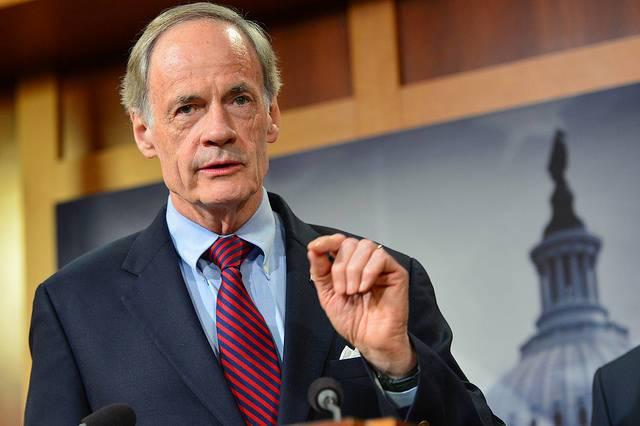

Senator Tom Carper (D-Del.) has a few probing questions for Environmental Protection Agency Administrator Scott Pruitt these days. And with the recent explosion at the Crosby, Tex. Arkema plant, it seems that list is getting much longer.
Last week, while Hurricane Harvey was pummeling the Texas coast, the Arkema chemical plant, which stores volatile substances like organic peroxides under refrigeration, lost power. Although the cause of the explosion is still being determined, there’s been some question as to whether the plant was up to date on its risk assessment protocol and whether it should have had a back up system in place to ensure the chemicals didn’t lose refrigeration.
Worse, is the fact that nearly a week later, authorities still do not have a complete list of the chemicals that are on site, or what the concoction of fumes was that police officers were inhaling when they arrived at the explosion. Fifteen officers were subsequently sent to the hospital for inhaling toxic fumes.
Carper, who has been fairly critical of Pruitt’s plan to downsize the EPA’s role in regulating industries like chemical manufacturing plants, had investigators quickly assess what backup procedures were in place when the power went down. Carper is one of the top Democrats of the Senate Committee on Environment and Public Works, which has direct oversight for the EPA.
It seems investigators had some help in finding a track record record to follow, because Arkema already had a history of Occupational Health and Safety violations on file, many of which were rated by OSHA as “serious.”
In 2016, the plant was fined more than $91,000 for a variety of issues, including insufficient equipment testing and failure to maintain equipment safety systems. All of the violations were supposed to have been fixed last year, so it isn’t clear whether any of the violations played a role in this year’s systems failure.
But investigators did figure out that both the emergency generators and the additional back-up cooling systems that were in place had failed during the flooding last week. And that’s now leading to questions about whether the plant was receiving regular inspections as it should have under Pruitt’s administration.
Pruitt isn’t exactly known these days for being forthcoming when it comes to his plans for the EPA. But his admission in April at the Harvey Coal Mine in Sycamore Penn. that he planned to return the EPA “back to basics” by cutting EPA programs has stoked concern for many environmentalists and put lawmakers like Carper on edge. President Trump’s proposal to cut funding for Risk Management Plan program by more than a third in 2018 has prompted concern that communities could be at risk if back up systems failed in a disaster as it did in Crosby.
Pruitt has also been taken to task for a number of statements he’s made about climate change and the environment in the past few years.He also recently lost an appeal to delay the enforcement of the Obama-era Methane Rule, one of several of rules that the Trump administration wants to halt, but has been unable to do in court.
These battles have also helped galvanize the attention of critics who are also concerned about the role of an administrator that doesn’t believe action needs to be taken to combat global warming or protect endangered species.
So Carper has forwarded a letter to Pruitt with six key questions about the EPA’s current and future role in factories like Arkema. It’s fairly clear by their tone that Carper isn’t looking for answers about how the explosion occurred as much as how Pruitt’s EPA will function in oversight now that it is clear that environmental disasters, such as what happened in Crosby, can happen.
In light of this incident, do you continue to support the President’s FY 2018 proposed 35 percent reduction in funds for the Risk Management Plan program? If so, why? If not, why not?
“In light of this incident, do you continue to support the two-year delay in the implementation date of the update of the Risk Management Rule you recently promulgated, and if so, why?
For its part, Arkema, which operates more than 25 chemical facilities across the US. has published a statement on its Crosby, Tex. website page, stating that the facility “produces liquid organic peroxides that are used primarily in the production of plastic resins, polystyrene, polyethylene, polypropylene, PVC and polyester reinforced fiberglass, and acrylic resins.” It states that it has had “one lost time injury in 7 years (it didn’t specify when that happened)” and that it keeps up-to-date with the EPA’s requirements for air pollution control.
It has not explained why the back-up equipment, designed to take over in the case of a failure, did not operate.
So far, there’s been no response from Pruitt or from President Trump as to whether they will revise their plans to downgrade regulatory oversight of high-risk industrial manufacturers like Arkema.
But you can bet Sen. Carper will be waiting to hear their answers
Images: Flickr/The Texas National Guard; Flickr/Senate Democrats
Companies Urged to Tackle Forced Labor Abuses in Sugarcane Industry
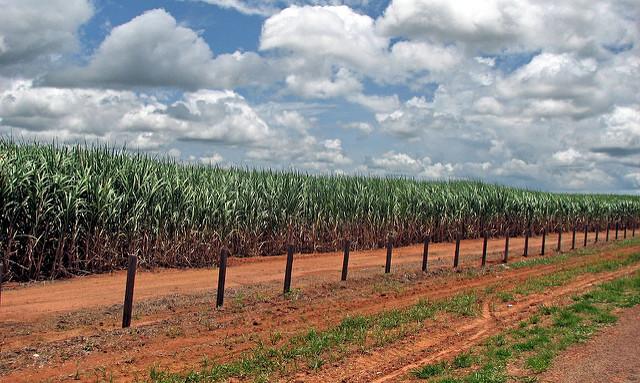

The coalition behind KnowTheChain, which strives to eradicate slavery and forced labor from companies’ supply chains worldwide, has taken on another industry: sugar.
According to a recent report, food and beverage companies including Hershey, Mondelēz, Nestlé, PepsiCo and Coca-Cola all face varying degrees of risk throughout their sugarcane supplier networks. Joining those firms are major commodity suppliers such as Archer Daniels Midland and Wilmar, which KnowTheChain says are also exposed to these problems within their supply chains – often because these companies lack transparency about discussing where and how they source their sugar.
This survey follows similar studies KnowTheChain has completed that analyze forced labor across other industries’ supply chains, such as information technology, apparel and the wider global food industry. In addition to actions taken by other human rights NGOs, KnowTheChain has convinced companies as diverse as Marriott, Michael Kors and Ford to take stronger action in order to stop their suppliers from turning to forced and bonded labor.
Among the reasons why more food companies have become susceptible to such risk, especially here in the U.S., is the non-GMO movement. As more food companies decide to sidestep potential state and federal regulations by slapping a non-GMO label on their products, many of them are scrambling to find alternative sources of sugar. An NPR report last year estimated that half of all U.S. sugar is processed from sugar beets – and those crops are almost exclusively from GMO seeds. From consumers' point of view, the result may appear to be a more sustainable supply chain - for the worker denied wages or buried in debt due to fees owed to a recruiter, the outcome is a very different story.
Hence there is a shortage of cane sugar, which often means sourcing from the world's two largest suppliers of sugarcane, India and Brazil. KnowTheChain says evidence shows some producers in those countries have grown and processed sugar using bonded or forced labor – and the same goes for small sugar producing nations such as Guatemala, Pakistan, Bolivia, Pakistan and the Dominican Republic.
The report was not a compete indictment of the food industry. All of the 10 companies highlighted in the report disclose at a minimum where parts of their sugarcane supply chains are based. Coca-Cola, for example, presents stakeholders a map so they can see where the ingredients harvested for the companies’ beverages are sourced. But KnowTheChain’s researchers also accused Coca-Cola of not delivering on a 2013 promise to disclose all of the companies’ direct sugarcane suppliers by 2016. Singapore-based Wilmar, however, lists the name and addresses of its sugarcane suppliers. And PepsiCo, Nestlé and the U.K’s Associated British Foods were found in the report to making more of an effort to assess forced labor risks within their supply chains.
But to KnowTheChain, and the estimated 45 million workers worldwide entrapped in slavery, these small steps in disclosures together comprise progress that is far from sufficient. Many of these companies talk about conversations, commitments and partnerships with human rights NGOs in order to make their sugar supply chains far less sour for the workers who toil within them. KnowTheChain, however, concluded the report with this searing criticism:
“No company in the case study was able to provide an example of remedy offered to workers in their sugarcane supply chains—an indication that this is an area where companies still have a long way to go.”Image credit: Lou Gold/Flickr
Derreck Kayongo - From Refugee to CEO
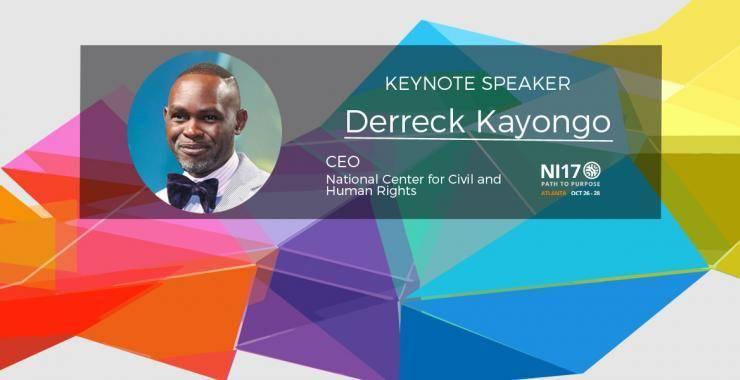

Derreck Kayongo brings life to the word tenacity. Kayongo will be a keynote speaker at the 2017 Net Impact Conference where he will inspire attendees with his Path to Purpose.
From Unthinkable Hardship to Incredible Impact
Kayongo was born in Kampala, Uganda just before General Idi Amin Dada, now one of history’s most notorious dictators, seized power in a military coup. As violence spread through the country and civil war erupted, Kayongo and his family became refugees in Kenya. He later immigrated to America to attend university. Throughout his successful career as an entrepreneur and human rights innovator, Kayongo has become a renowned expert in environmental sustainability and global health. Since 1994, he has served in leadership roles at some of the world’s most respected NGOs.
In 2009, Kayongo and his wife began laying the foundations for the Global Soap Project with veteran hospitality executive, Vicki Gordon. He recalled his time visiting refugee camps—where lack of basic hygiene left families vulnerable to disease. Kayongo came up with the idea to recycle discarded and partially-used soap from hotels and strategically distribute the bars to those lacking access to it around the world. The Global Soap Project has since partnered with many other leading global health organizations. It creates immediate positive health impact and supports local economies.
Today, Kayongo is the CEO of the National Center for Civil and Human Rights in Atlanta, Georgia. The Center allows visitors to explore the fundamental rights of all human beings and leave empowered to join the conversation in their own communities. In 2011, he was named a 2011 CNN Hero, and in 2016 the Georgia State Senate passed a resolution recognizing Kayongo’s incredible journey from refugee to CEO.
Kayongo has made a meaningful difference in the human rights and sustainability movements. Register today to hear Kayongo’s keynote speech and to reserve your spot on the National Center for Civil and Human Rights excursion at the 2017 Net Impact Conference.
Are you passionate about human rights? Join the conversation with @derreckkayongo and the Center (@Ctr4CHR).
Gas Prices Spike But Texas Wind Farms -- and Grid -- Hold Steady After Harvey


Harvey was the first major hurricane to hit the Gulf region since Katrina in 2005, and energy infrastructure has changed dramatically since then with the advent of wind and solar power. For that reason, energy observers have been keenly interested in the impact that Harvey would have on wind farms and other renewable energy installations when it hit Texas on August 28.
Texas is an especially significant test case because its wind industry has been surging in recent years.
The news for wind power so far looks good, and storm-related power outages were limited to the area of Harvey's impact. In contrast, the effects of the hurricane have rippled out to impact gasoline prices far beyond Texas -- and the environmental consequences are piling up, too.
Texas wind farms at risk from Harvey?
Coastal wind farms in Texas formed one area of concern. Before the storm hit, Bloomberg predicted the worst with this headline:
Harvey Set to Overpower Wind in State Generating the Most
That headline, though, was a little over the top. Wind turbines are designed to shut down and "shelter in place" in case of potentially damaging winds, generally at about 55 miles per hour.
Actual damage to the turbines would not kick in until wind speeds reach the 140-mile-per-hour range of a Category 4 hurricane. Since hurricanes rapidly lose force over land, even a storm of that makes landfall at that magnitude is not likely to damage inland wind farms.
Coastal wind farms did shut down and evacuate in advance of the storm, but then again, so did offshore oil rigs and onshore fossil fuel facilities. In that regard the impact of Harvey was similar for fossil fuel and renewable energy.
That's where the similarity ends, though. Hurricane Harvey tore through the Texas petroleum infrastructure, with a ripple effect far beyond the state. Offshore oil rigs went back on line quickly but shipping routes and onshore refineries and have remained impacted by flooding a full week after the storm hit.
Concerns over safety risks and the availability of land transportation routes caused some onshore gas and oil drillers to reduce or halt production, and the Colonial pipeline line -- the major petroleum land route from Texas to points east -- also shut down operations.
Given these impacts, a gasoline price spike was bound to occur. The question was, how much?
Gasoline prices spike
Some analysts anticipated that the global oil glut would help smooth the impact on gasoline prices. The U.S. Department of Energy authorized the release of crude oil from the nation's Strategic Petroleum Reserve, which could also mitigate the worst of the impact. Incoming supplies from overseas will also help ease any potential shortages.
Nevertheless, gas prices began inching up shortly after the storm passed. By September 1, prices were already reaching a "worst case" scenario. ABC news reported that the national average price per gallon for regular grade gasoline was up 20 cents per gallon, to $2.56, and could peak at $2.75.
That's just the average. Prices went higher in Texas, with one station in Dallas reportedly selling at $3.97. Prices also climbed higher in areas of the southeast and eastern U.S., areas which depend on the Colonial Pipeline.
Although Texas state officials insisted that gasoline supplies in the area were adequate, drivers rushed to top off their tanks after the storm passed. The result was "panic mode" -- long lines and depleted supplies at some stations.
As of September 1, some analysts were predicting that drivers could also go into panic mode in other areas of the U.S., even if supplies in those areas are sufficient for normal demand.
The environmental ripple effect
Harvey hit a coastal area of Texas with a high population of refineries and petrochemical plants, an unknown number of which have released air pollutants and toxic chemicals before, during and after the storm (some of the releases were planned and reported to EPA as facilities ramped down operations in advance of landfall).
Superfund cleanup sites may be another source of pollution issues. So far EPA has conducted initial assessments at more than 40 Superfund sites in the impacted areas using aerial images and information provided by the site operators. The agency is in the process of conducting on-site inspections.
Harvey's effect on gasoline supplies also bears with it an environmental consequence far beyond the area of the storm's impact.
Last week, the U.S. Environmental Protection agency waived Clean Air Act requirements for motor fuel in Texas, 11 southeastern states and Washington, DC. Under the Clean Air Act, refiners produce a summertime formula for gasoline. Though the refining process is more expensive, the goal is to limit ground-level ozone pollution during the summer months, when warm weather causes gasoline to vaporize.
Ozone can worsen symptoms of asthma and other lung conditions, and it is a health risk for the elderly, babies and children, and persons engaged in exercise or other physical exertion.
Wind farms hold steady
The ripple effects of Harvey on the nation's petroleum infrastructure will continue for days if not weeks. If and when gas prices settle down, it could still take years to resolve the environmental impacts.
Meanwhile, Texas wind farms recovered quickly.
At least one wind farm located on the "clean" side of the storm's path was able to operate continuously, earning a shoutout from Bloomberg:
Harvey Pushed This Texas Wind Farm All the Way to the Max
Almost all of the wind farms that did shut down were back also online by August 31. The one exception was the Papalote Creek Wind Farm near Corpus Christie. The wind farm was not damaged but local power lines needed repairs.
The 196-turbine wind farm was up and running by September 1, motivating a cheery headline and lede from the Wall Street Journal...
In Big Test of Wind Farm Durability, Texas Facility Quickly Restarts After HarveyFor the first time in the history of the burgeoning U.S. wind industry, a wind farm got hit by a hurricane—and it was back producing power within days.
According to the Wall Street Journal, Harvey was the first major test of wind turbine durability under hurricane conditions, and it looks like the inland wind farms passed with flying colors.
Offshore wind farms would potentially take a much harder hit, but there are currently no offshore wind farms in the U.S., except for the new Block Island farm off Rhode Island.
Lessons (already) learned
While energy and environmental analysts are still shaking out the numbers, several takeaways are emerging.
One key theme is that the centralized, concentrated nature of the U.S. fuel infrastructure is out of date as global temperatures rise and extreme weather events become more frequent and intense.
In a petroleum-dependent economy, storms like Harvey effect commerce, public health and the environment far beyond the immediate area of impact.
In contrast, wind farms in the area of impact suffered virtually no damage.
Even more to the point, although the local electricity grid was impacted significantly, the ripple effect on the Texas grid was practically unnoticeable.
By August 31, the Houston Chronicle was reporting that more than 800,000 customers in the Houston area lost power at some point during Harvey and its aftermath, and all but 40,000 were restored. Many of those still without power were in areas still impassable due to flooding.
Throughout the storm, ERCOT (the grid manager for almost the entire state) reported that the grid beyond the area of impact was holding steady.
Because of wind farm shutdowns in advance of Harvey, the contribution of wind power to the Texas grid did slip temporarily. Normally wind provides up to 20 percent of the state's power during daily peak wind hours, and that fell to around 13 percent after Harvey made landfall.
However, the lost capacity did not affect grid stability elsewhere in the state.
It's true that in the past widespread breakdowns have rippled through the nation's grid, but a grid modernization initiative spearheaded by the U.S. Department of Energy is making events of that magnitude less likely.
Cyber attacks on grid systems are also a growing concern, but that is an issue shared by any industry with an Internet connection.
The Energy Department foresees that the electricity grid of the future will be rely on diverse, decentralized energy sources and energy storage, including energy storage in the form of renewable hydrogen. Mobile storage capacity -- aka electric vehicles -- are also playing a growing role in the modern grid.
Disaster organizations, businesses and private citizens -- and the U.S. military -- are already beginning to turn to renewables and energy storage to ensure power during emergencies rather than relying on diesel generators.
No infrastructure is immune from disaster, but if the focus is on limiting impacts and recovering rapidly, Harvey has underscored the contrast between petroleum dependency and the grid of the future.
Image (screenshot): National Weather Service.